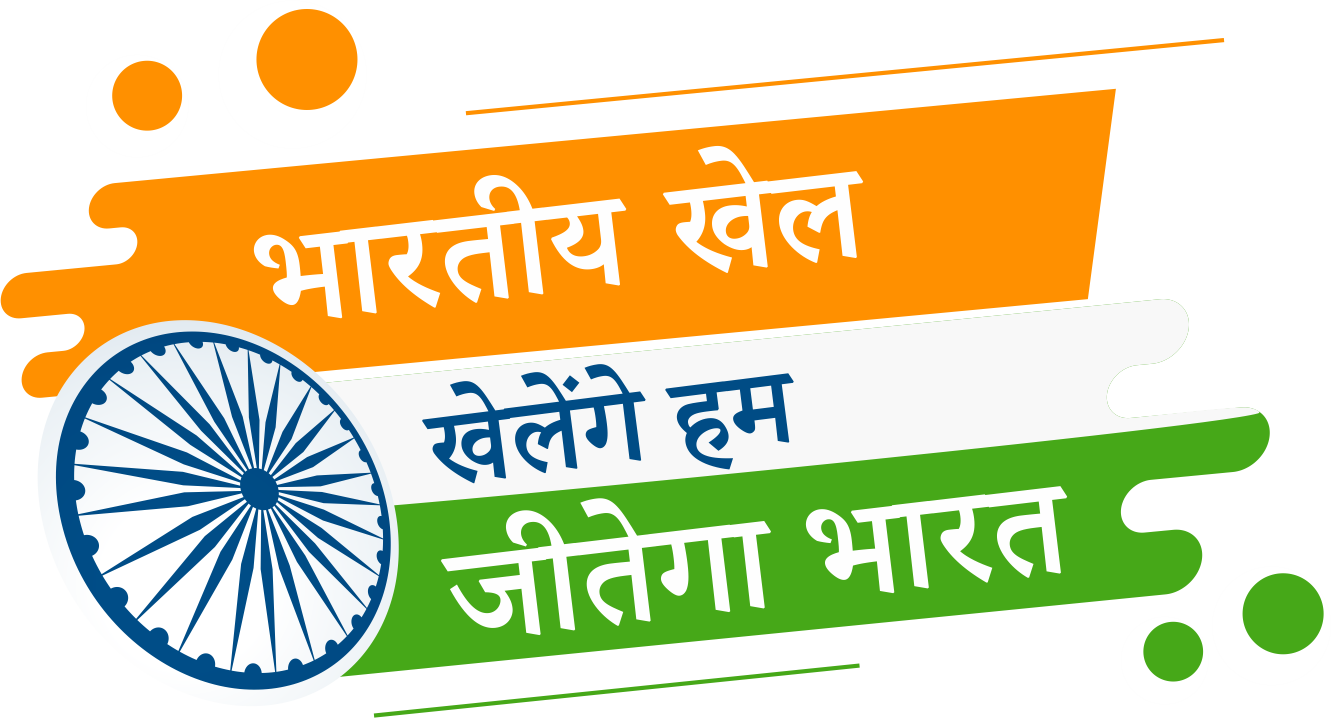Gilli Danda/Viti Dandu

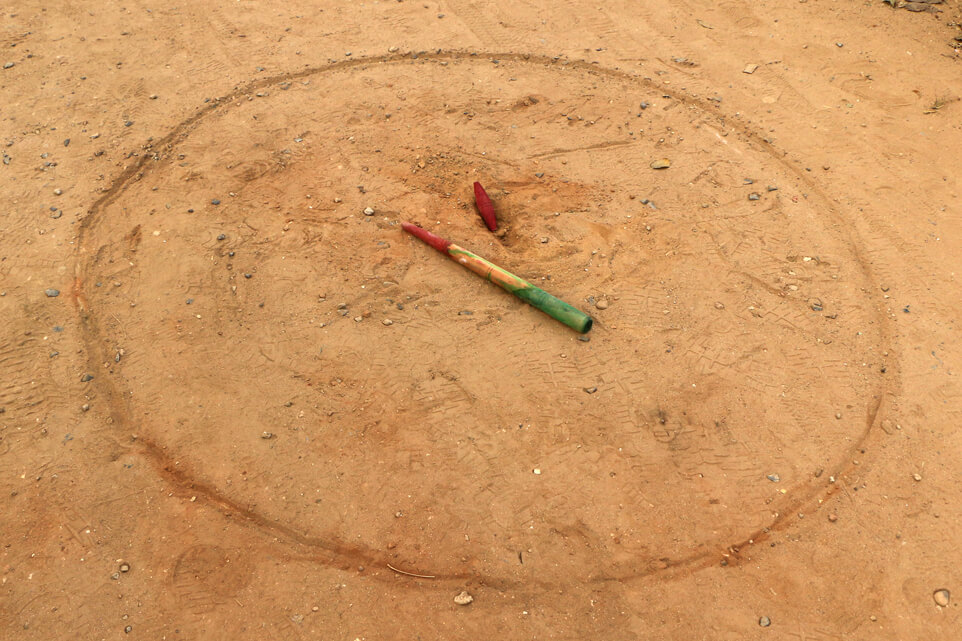
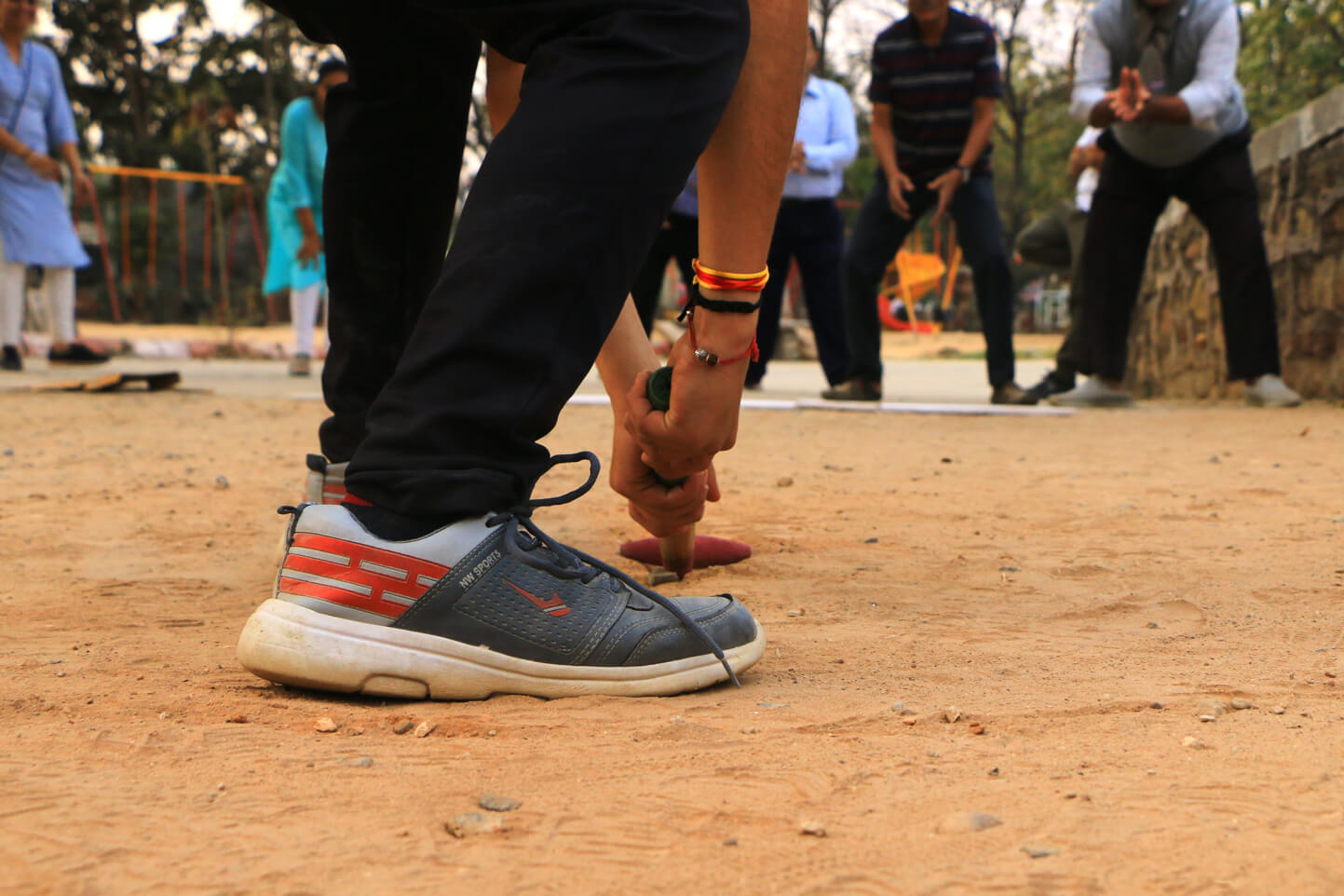
Gilli Danda/Viti Dandu
How to play
Training Material : Gilli Danda/Viti Dandu
Introduction
The sport of striking a small tapered wooden stick called Gilli with a long stick has been popular in India for about 5000 years. It is believed to have been spread by the Maurya empire about 2500 years ago to Sindh, Afghanistan, Nepal, Bangladesh, Cambodia, Italy, some parts of Turkey, and South Africa. This game is said to be the precursor of American Baseball and British Cricket.
Other Names
Other Names of the Game
| Region | Name | Region | Name | |
|---|---|---|---|---|
| Ancient India | Ghaṭikā | Bengal | Danguli | |
| Kerala | Kuttiyum Kolum | Karnataka | Chinni kolu | |
| Bihar | Guli tan | Maharashtra | Viti Dandu | |
| Kashmir | Lathkeeji-Loth | Multan | Geeti Danna | |
| Tamilnadu | Kitti Pullu | Punjab | Gulli Danda | |
| Telangana | Chirra gonay | Assam | Tan Guti | |
| Andhra Pradesh | Billam Godu, Gooti Billa | Odisha | Guli Badi, Guti Dabula |
| Region | Name | Region | Name | |
|---|---|---|---|---|
| Meghalaya | Beh Dieing khun | Sindh | Iti Daka | |
| Nepal | Dandi Biyo | Konkan | Koyondo-Bal | |
| Cambodia | Kon Ko | Indonesia | Pathel Lele | |
| Turkey | Çelik Çomak | Vietnam | Đánh Trỏng, Đánh Khăng | |
| Burma | Ciang Sat | Philippines | Awe Etew | |
| Italy | Lippa | Cuba | Quimbumbia | |
| Afghanistan | Lappa Duggi | Persia | Alak Doulak |
The play
Most suitable for
This game is suitable for any player who possesses the ability to judge the motion of the Gilli and can strike it with force and precision. It is generally played by children of the ages between 8 to 20, however, this game can be played equally easily by individuals of all ages and both genders.
This game does not involve running, which makes it easy to play by older persons as well. It does require precision and a sense of the dynamics of the movement of the Gilli and the ability to strike in the direction and the distance desired.
The play
The goal is to strike the Gilli to drive it the farthest possible without it getting caught by the opposing team. The striker scores points by measuring the distance covered by the Gilli from the striking point. After the Gilli has been struck, the opponents need to catch it in mid-air, before it hits the ground.
Equipment
The game is played with two wooden sticks
Gilli:– This stick is 4 to 6 inches long and 1-1.5 inches in diameter, tapered on both sides. At both ends of the stick, the diameter is about one-third of the middle part.
Danda:– 1.5 to 2 feet long stick, 1 inch in diameter. Used for striking the Gilli.
The Gilli is tapered at both ends to allow for striking it and the greatest challenge lies in how well and how far one can strike the spinning Gilli in the air.
The Playground
This game is played in the streets or in any open ground measuring about 60m in length and 40m in breadth. A formal sports ground is not necessary as one can draw informal boundary lines and the dimensions can be adjusted to fit the space available. For official matches (according to All India Vitti Dandu federation) the playground dimensions vary from 40m to 100m in length with boundaries. The figure below describes the dimensions.
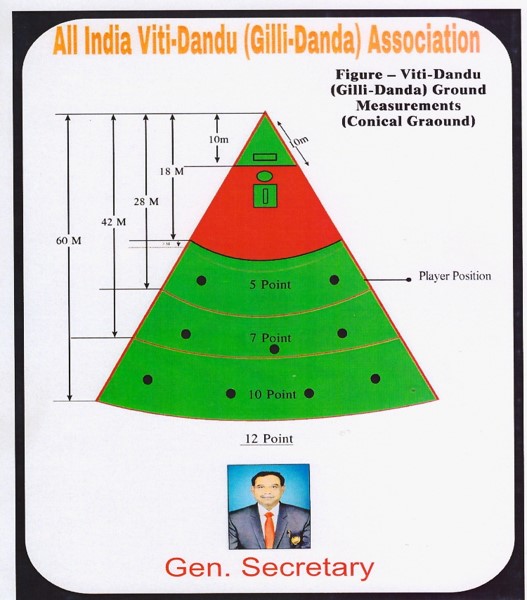
The Playground for Kho Kho
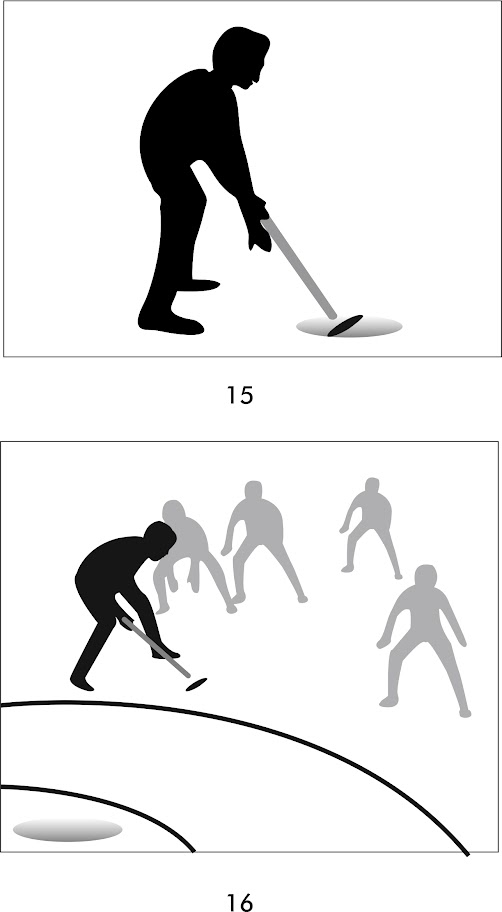
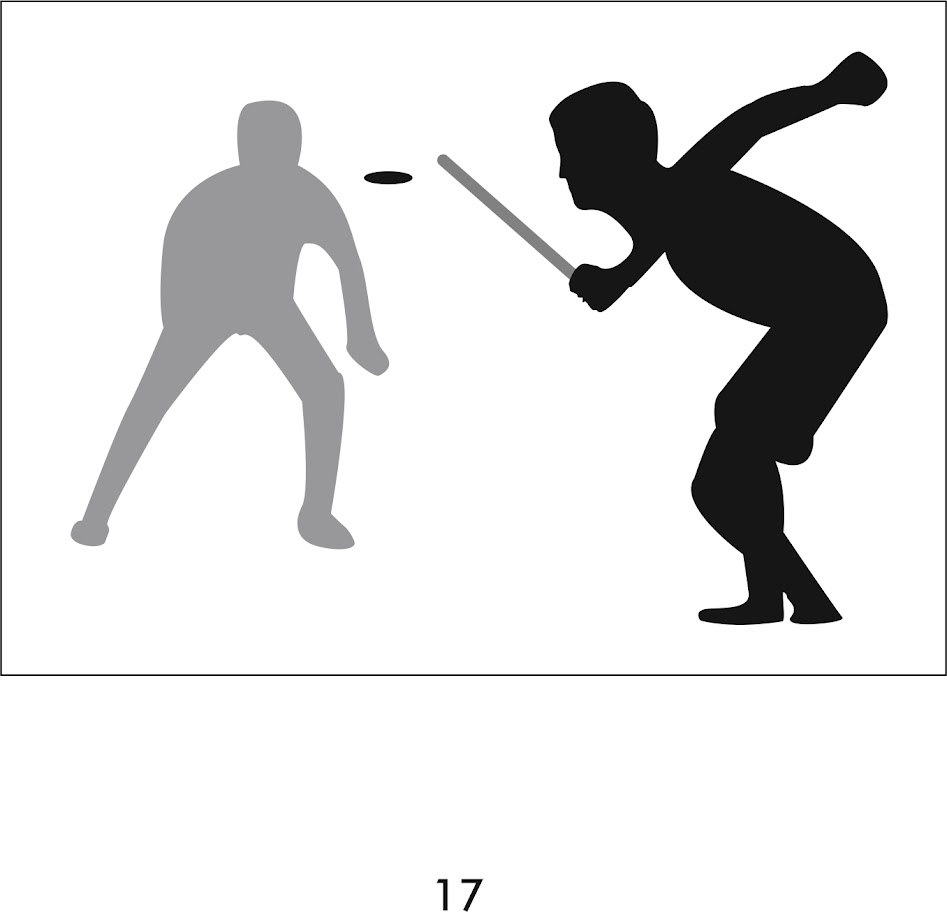
Playing Method
Divide the players into two teams. Select one player from each team to be the captain.
Toss a coin. The team that wins the toss will choose either to strike first or field first, but not both.
A circle of a 2m radius is drawn on the ground and in the center, a small (about 3 inch length and 1 inch in width) oblong hole (called Guchhi) is dug. The captain places the Gilli across that hole and the striker will toss it from that point.
At the distance of 10m from the circle a line is drawn that is called first boundary line
The striker will take a position at the circle close to the Guchhi while the fielding team is spread on the ground to the field, in a position from where they can catch the Gilli. Notice that there is no throw of Gilli by opponents to strike it.
The striker lifts the Gilli from the Guchhi with the Danda, tosses it in the air as far away as he/she can, in a direction where no fielder can catch it. And it must go beyond the first boundary line.
If the player lifts the Gilli and any of the fielders catches before it touches the ground, then the striker is ruled out.
If the striker tosses the Gilli and no fielder can catch it, then a fielder grabs the gilli and throw it back targeting the circle, where the striker has placed the danda. If the gilli touches the danda then the striker is out.
If the gilli doesn’t touch the dansa then the striker can play the next step.
Placing the gilli in the Guchchi in slanting position to strike it to lift it from the ground and hit forcefully to send it far.
The game proceeds with the striker reaching to the Gilli and strike it from the ground to lift up and quickly strike again to send it as far as possible and away from fielders.
He gets 3 continuous chances to hit the Gilli.
The distance from the circle to the point where the Gilli fell after 3 chance of striking, is measured using Danda.
If the gilli is caught by any of the fielders , he is out.
The next player of his team comes to strike.
The above steps are repeated until all the players of the striker team are out. The final score of the team will be a total of points gained by all the players.
Now the role exchanges and the striker team will start fielding. The above steps for the striker team will remain the same, the second innings begins with chasing the opponents’ score.
The team with the maximum score will win the match.
Process Diagram
Scoring
The points a striker scores depend on the distance the Gilli falls from the striking point. The distance is measured in terms of the length of the Danda, it’s length each time counts as one point to the striker. So the striker gains as many points as the number of times it takes to cover the distance with the Danda.
( we can also set a unit for scoring, as 3 Danda= 1 point.
How to referee
At the first step the striker can not bounce the gilli out of the first boundary, he/she cannot play the next step.
After 3 strike, the captain/referee measures the distance that the Gilli reached at. Once the distance is measured and noted then the next player can come to strike.
The striking player is out in the following situations
If the Gilli thrown back by the fielder hits the Danda or falls in the circle.
If the Gilli is caught by the fielding team after tossing it or striking it.
When the striker hits the Gilli falls behind the circle
If at the first step bouncing from the Guchchi, Gilli cannot beyond the first boundary.
Key strategies
Striking the Gilli in the right direction and gauging the force needed to send it farthest, is tricky. Application of different physics principles is associated with each movement of the game, like momentum conservation, inclination angle, the center of mass/gravity for the Gilli, and moment of inertia.
Caution
The play can be risky sometimes when Gilli can go astray and hit a player or a passerby. In addition, the Gilli often gets lost in bushes and the players need to watch for snakes and other animals.
Skill developed
The game improves hand-eye coordination and builds concentration. Develops aiming precision and the judgment of muscular strength, different scoring methods improve basic mathematics like counting by decided units.
Life Lessons
Playing this game forms a connection with the familiar ideas and unperceived worlds through the demonstration of physics laws. Thus provides powerful evidence for a strong link between the neuroscience of brain chemistry and the joy of playing.
To test the hypothesis that ‘Traditional native games that may possibly play a major role in designing an ‘activity based physics curriculum’, this paper described the use of Gilli danda as the game and concluded that the average understanding of physics concepts in learners can be achieved by using this game.
Origin and references
क्रीडन्तो वीटया तत्र वीराः पर्यचरन्मुदा । पपात कूपे सा वीटा तेषां वै क्रीडतां तदा ॥
This verse from Mahabharat is a reference to the Pandava and the Kaurava playing Vitayaa with Gilli. The term Gilli Danda is derived from Ghaṭikā [ghaṭ a+ka]. An explanatory definition is given in the commentary as Ghaṭikā is “a game played using two sticks.
The Hindi writer Premchand wrote a short story named ‘Gilli-Danda’ in which he compares old simple times and emotions to modern values and also hints at cultural inequalities in India. The Indian movie Lagaan mentions the traditional youth sport of Gilli-Danda and shows its relevance with cricket strategies.
In 2014 Vitti Dandu, asport-drama Marathi movie was made on the same sport produced by Ajay Devgan and Leena Deore.
The 1934 Laurel & Hardy film Babes in Toyland features Laurel playing the US version of the game, which he refers to as Pee Wee. In Italy a similar game known as Tirolo or S-cianco is shown in the movie Watch Out, We’re Mad! (If you have used any references, put the links below)
Current state
This sport of the rural and small towns is still fairly popular in northern India. In 2016 the countries playing Gilli Danda came under the aegis of Gilli Danda International Federation headquartered in NOIDA in Uttar Pradesh. In addition to India, Nepal, Afghanistan, Brazil, Bhutan, Iran, Basque, Bangladesh, Pakistan, Taiwan, South Africa, and Italy.
Gilli Danda has been included in the 4th Ambedkar National games since 2017. Since 2018 it has been included in the National games in Khel Mahakumbh.
Shobhit Maurya is the world champion of Gilli danda at present with several world records in his name.
Other champions: Deepali Gode from Kalyan, Varun, Ajay Kaushik, Rohit Mishra, Vijay Choudhary of Darbhanga, Somendra Kumar of Patna, Vivek Baranwal of Varanasi, Upender Kumar, Satyendra Tripathi, Sandeep Prakash from Lucknow, and Sudhanshu Yadav from Jaipur.
Variations of Gilli Danda
Gilli Danda International Federation has approved rules with variations in scoring techniques, playground dimensions, and playing methods that are implemented for official matches.
The major difference is when the Gilli becomes airborne after it is struck and lands on the ground, the fielder closest to the Gilli has one chance to hit the Danda (which is to be placed on the Guchhi) with a throw of Gilli (similar to a run out in cricket). If the fielder is successful, the striker is out; if not, the striker scores one point and gets another opportunity to strike.
Similar games across the world
Giddy-gaddy | England | Pati-Kubra | Philippines | |
Jachigi | South Korea | Changarais | Mexico | |
Chilingaghaj | Azerbaijan | Pandolfo | Slovenia | |
Billarda | Galicia, Spain | Da-ga-ga | China | |
Bòlit | Catalonia and Valencia | Kimbomba | Mexico |
Glossary
Gilli A small wooden stick, about 4 to 6 inches long, crafted from a twig.
Danda A long wooden stick to strike, 1.5 to 2 feet long and of about 1-inch diameter.
Guchhi An oblong hole dug on the ground, about a handspan long and 1 inch wide.
Address
Bharatiya Khel
Indian Knowledge Systems (IKS) Division
Ministry of Education (MoE),
Government of India,
Our office is located in
All India Council for Technical Education (AICTE)
Nelson Mandela Marg,
Vasant Kunj,
New Delhi-110070

